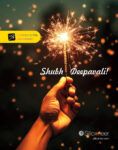Britain’s shame, and still not sorry: The 1919 Amritsar massacre
Indian Punjab Police personnel light candles as they pay tribute to those who died in the Jallianwala Bagh massacre of April 13, 1919 (NARINDER NANU)
Amritsar (India) (AFP) – The Amritsar massacre, 100 years ago this Saturday in which British troops opened fire on thousands of unarmed protestors, remains one of the darkest hours of British colonial rule in India.
Known in India as the Jallianwala Bagh massacre, it is still an emotive subject with many demanding a British apology — which so far has been unforthcoming.
The number of casualties on April 13, 1919 is unclear, with colonial-era records showing 379 deaths while Indian figures put the number at closer to 1,000.
– The prelude –
In March 1919, the British colonial government passed the Anarchical and Revolutionary Crimes Act, or the Rowlatt Act, extending repressive measures in force during World War I (1914-18).
These included incarceration without trial, and caused widespread anger, particularly in the northern Punjab region, with Mahatma Gandhi calling for a nationwide general strike.
In Amritsar news that prominent Indian leaders had been arrested and banished from that city sparked violent protests on April 10.
These saw soldiers fire upon civilians, buildings looted and burned, while angry mobs killed several foreign nationals and attacked a Christian missionary.
– High walls –
Brigadier General Reginald Edward Harry Dyer was tasked with ensuring order, and imposed measures including a ban on public gatherings.
On the afternoon of April 13 some 10,000 people gathered at the Jallianwala Bagh, an area in Amritsar surrounded by high walls with only one exit.
It was also Baisakhi, a harvest festival in northern India.
The crowd included men, women, children and pilgrims who were visiting the nearby Golden Temple, one of the holiest sites in Sikhism. Some estimates put the crowd at 20,000.
– Enter Dyer –
Dyer, later dubbed “The Butcher of Amritsar”, reached the spot with dozens of soldiers and sealed off the exit.
Without warning, he ordered the soldiers to fire on the unarmed crowd. Many tried unsuccessfully to escape by scaling the walls. Others jumped into an open well at the site.
Reportedly the troops fired until they ran out of ammunition, letting off hundreds of rounds into the crowd before withdrawing.
The Indian Express newspaper earlier this week shared eyewitness accounts compiled by two historians. They included Mani Ram, whose 13-year-old son Madan Mohan used to play in the square with his friends.
“I, with eight or nine others, had to search for about half an hour till I could pick up his corpse as it was mixed up with hundreds of dead bodies lying in heaps there,” Ram said.
Dyer said later that the firing was “not to disperse the meeting but to punish the Indians for disobedience.”
– The aftermath –
The event marked a nadir in Britain’s occupation of India, and served to boost Indian nationalism and harden support for independence.
Reaction in Britain varied, with Dyer receiving support in the House of Lords and not least from Rudyard Kipling, who is said to have called him “the man who saved India”.
Winston Churchill, then secretary of state for war, called the massacre “monstrous”. Former prime minister Herbert Asquith called it “one of the worst outrages in the whole of our history”.
“The crowd was unarmed, except with bludgeons. It was not attacking anybody or anything… (P)inned up in a narrow place considerably smaller than Trafalgar Square,” said Churchill.
Dyer was removed from command into enforced retirement. He died in 1927.
– No apology –
Demands by several past Indian leaders and politicians for Britain to apologise for the massacre have fallen on deaf ears.
In 1997 the Queen laid a wreath at a site during a tour of India. But her gaffe-prone husband Prince Philip stole the headlines by reportedly saying that the Indian estimates for the death count were “vastly exaggerated”.
In 2013 David Cameron became the first serving British prime minister to visit Jallianwala Bagh. He described the episode as “deeply shameful” but stopped short of a public apology.
“We must never forget what happened here. And in remembering we must ensure that the United Kingdom stands up for the right of peaceful protest around the world,” Cameron wrote in the visitors’ book.
He later defended his decision not to say sorry, explaining that the massacre happened 40 years before he was born and saying: “I don’t think the right thing is to reach back into history and to seek out things you can apologise for”.
On Wednesday, Prime Minister Theresa May on Wednesday told parliament that Britain “deeply regretted what happened and the suffering caused.” But she too didn’t say sorry.
Disclaimer: Validity of the above story is for 7 Days from original date of publishing. Source: AFP.


